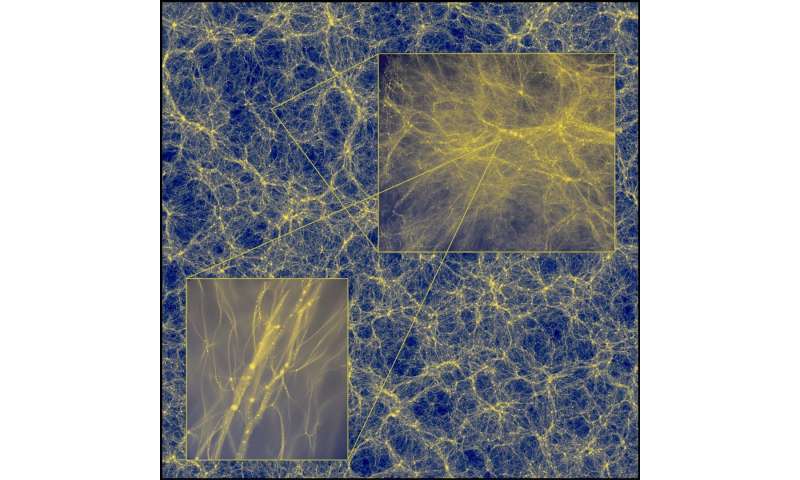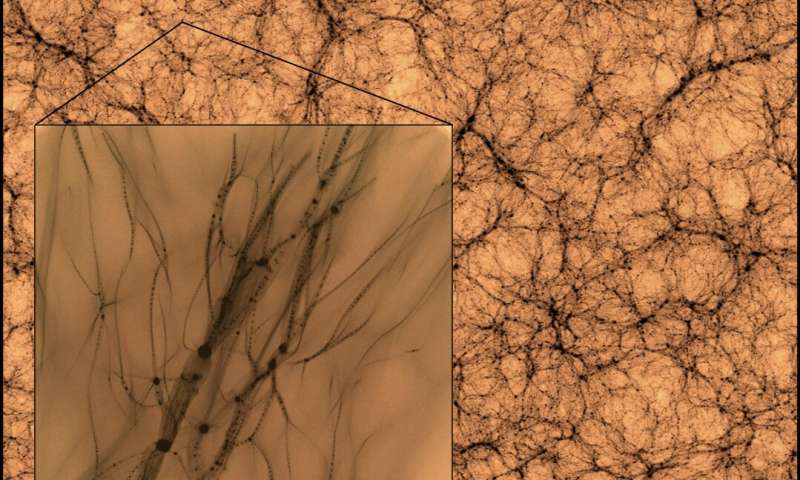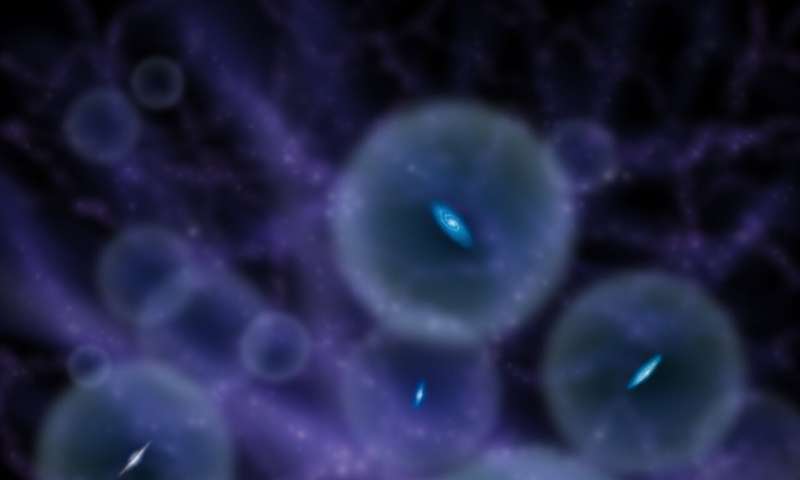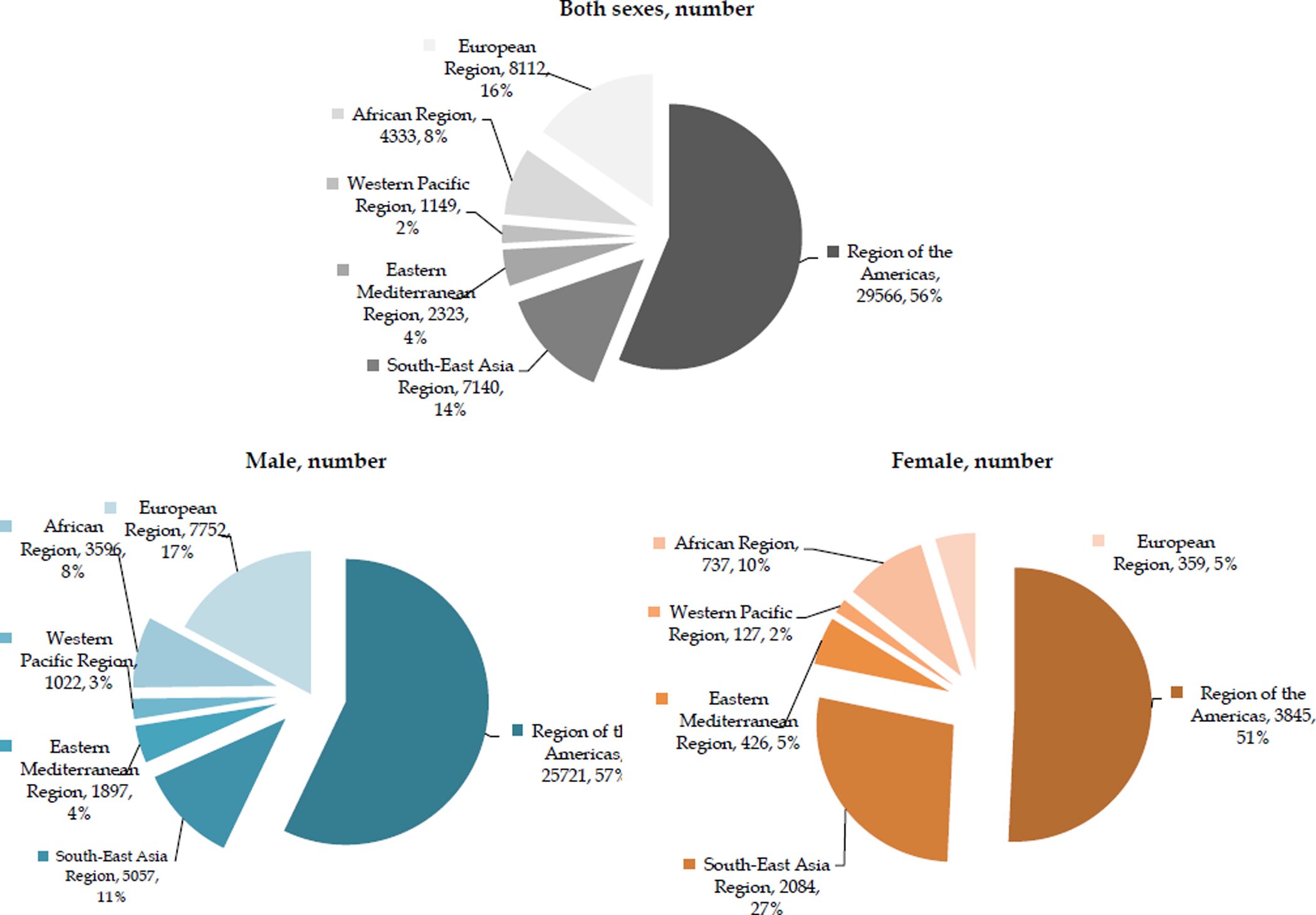#Zooming in on dark matter
“#Zooming in on dark matter”

Cosmologists have zoomed in on the smallest clumps of dark matter in a virtual universe—which could help us to find the real thing in space.
An international team of researchers, including Durham University, UK, used supercomputers in Europe and China to focus on a typical region of a computer-generated universe.
The zoom they were able to achieve is the equivalent of being able to see a flea on the surface of the Moon.
This allowed them to make detailed pictures and analyses of hundreds of virtual dark matter clumps (or haloes) from the very largest to the tiniest.
Dark matter particles can collide with dark matter anti-particles near the center of haloes where, according to some theories, they are converted into a burst of energetic gamma-ray radiation.
Their findings, published in the prestigious journal Nature, could mean that these very small haloes could be identified in future observations by the radiation they are thought to give out.
Co-author Professor Carlos Frenk, Ogden Professor of Fundamental Physics at the Institute for Computational Cosmology, at Durham University, UK, said: “By zooming in on these relatively tiny dark matter haloes we can calculate the amount of radiation expected to come from different sized haloes.
“Most of this radiation would be emitted by dark matter haloes too small to contain stars and future gamma-ray observatories might be able to detect these emissions, making these small objects individually or collectively ‘visible’.
“This would confirm the hypothesized nature of the dark matter, which may not be entirely dark after all.”
Most of the matter in the universe is dark (apart from the gamma radiation they emit in exceptional circumstances) and completely different in nature from the matter that makes up stars, planets and people.
The universe is made of approximately 27 percent dark matter with the rest largely consisting of the equally mysterious dark energy. Normal matter, such as planets and stars, makes up a relatively small five percent of the universe.

Galaxies formed and grew when gas cooled and condensed at the center of enormous clumps of this dark matter—so-called dark matter haloes.
Astronomers can infer the structure of large dark matter haloes from the properties of the galaxies and gas within them.
The biggest haloes contain huge collections of hundreds of bright galaxies, called galaxy clusters, weighing a 1,000 trillion times more than our Sun.
However, scientists have no direct information about smaller dark matter haloes that are too tiny to contain a galaxy. These can only be studied by simulating the evolution of the Universe in a large supercomputer.
The smallest are thought to have the same mass as the Earth according to current popular scientific theories about dark matter that underlie the new research.
The simulations were carried out using the Cosmology Machine supercomputer, part of the DiRAC High-Performance Computing facility in Durham, funded by the Science and Technology Facilities Council (STFC), and computers at the Chinese Academy of Sciences.
By zooming-in on the virtual universe in such microscopic detail, the researchers were able to study the structure of dark matter haloes ranging in mass from that of the Earth to a big galaxy cluster.

Surprisingly, they found that haloes of all sizes have a very similar internal structure and are extremely dense at the center, becoming increasingly spread out, with smaller clumps orbiting in their outer regions.
The researchers said that without a measure scale it was almost impossible to tell an image of a dark matter halo of a massive galaxy from one of a halo with a mass a fraction of the Sun’s.
Co-author Professor Simon White, of the Max Planck Institute of Astrophysics, Germany, said: “We expect that small dark matter haloes would be extremely numerous, containing a substantial fraction of all the dark matter in the universe, but they would remain mostly dark throughout cosmic history because stars and galaxies grow only in haloes more than a million times as massive as the Sun.
“Our research sheds light on these small haloes as we seek to learn more about what dark matter is and the role it plays in the evolution of the universe.”
More information:
Universal structure of dark matter haloes over a mass range of 20 orders of magnitude, Nature (2020). DOI: 10.1038/s41586-020-2642-9 , www.nature.com/articles/s41586-020-2642-9
Zooming in on dark matter (2020, September 2)
retrieved 2 September 2020
from https://phys.org/news/2020-09-dark.html
This document is subject to copyright. Apart from any fair dealing for the purpose of private study or research, no
part may be reproduced without the written permission. The content is provided for information purposes only.
If you want to read more Like this articles, you can visit our Science category.
if you want to watch Movies or Tv Shows go to Dizi.BuradaBiliyorum.Com for forums sites go to Forum.BuradaBiliyorum.Com



